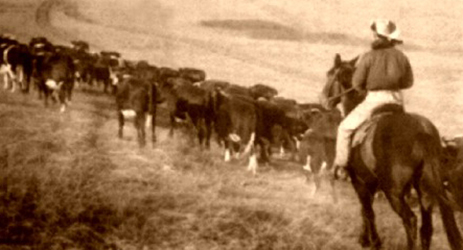Texas Land & Cattle Company

Texas Land and Cattle Company was a syndicate in Dundee, Scotland, organized to take advantage of the American Southwest's "Beef Bonanza" in the early 1880s. Robert Fleming was among its wealthy British shareholders.
Its promoters in the United States were Frank L. Underwood and William A. Clark, who set up their business firm in Kansas City and handled the company's records. Early in 1882 the syndicate purchased Miffin Kenedy’s Laureles, south of Corpus Christi, for $1.1 million. It also bought the Horseshoe (Laurel Leaf) Ranch, on Lake Creek in southeastern Hemphill County, and a portion of the Gunter-Munson survey along the Canadian River Valley.
By 1883 the Texas Land and Cattle Company controlled 80,000 acres of land. In addition to the "lower ranch near Corpus Christi," it held vast acreage from Lake and Cat creeks in Hemphill County to Cheyenne, in Indian Territory.
This northern Panhandle range was used primarily for steers, which seldom numbered above 10,000. The cows and calves, numbering around 80,000, were kept on the range downstate. The cattle on both ranges carried the Laurel Leaf brand, which the syndicate purchased and registered in 1883.
At its peak the company owned at least thirteen ranches in Texas and Indian Territory. However, its prosperity was short-lived. The price of beef fell. Also, range records revealed discrepancies in the inventories of purchasing agents, and the investors actually owned far fewer cattle than was supposed. Although new agents were sent from Scotland to try to mend the situation, that action came too late.
New land laws likewise led to the company's demise; in 1885 the state of Texas billed the properties in Hemphill County a lease fee of three cents an acre. In the winter of 1886–87, severe blizzards destroyed close to 75 percent of the cattle. Consequently the syndicate gradually sold out all of its Panhandle lands by 1888. By 1910 the Texas Land and Cattle Company was ended.

